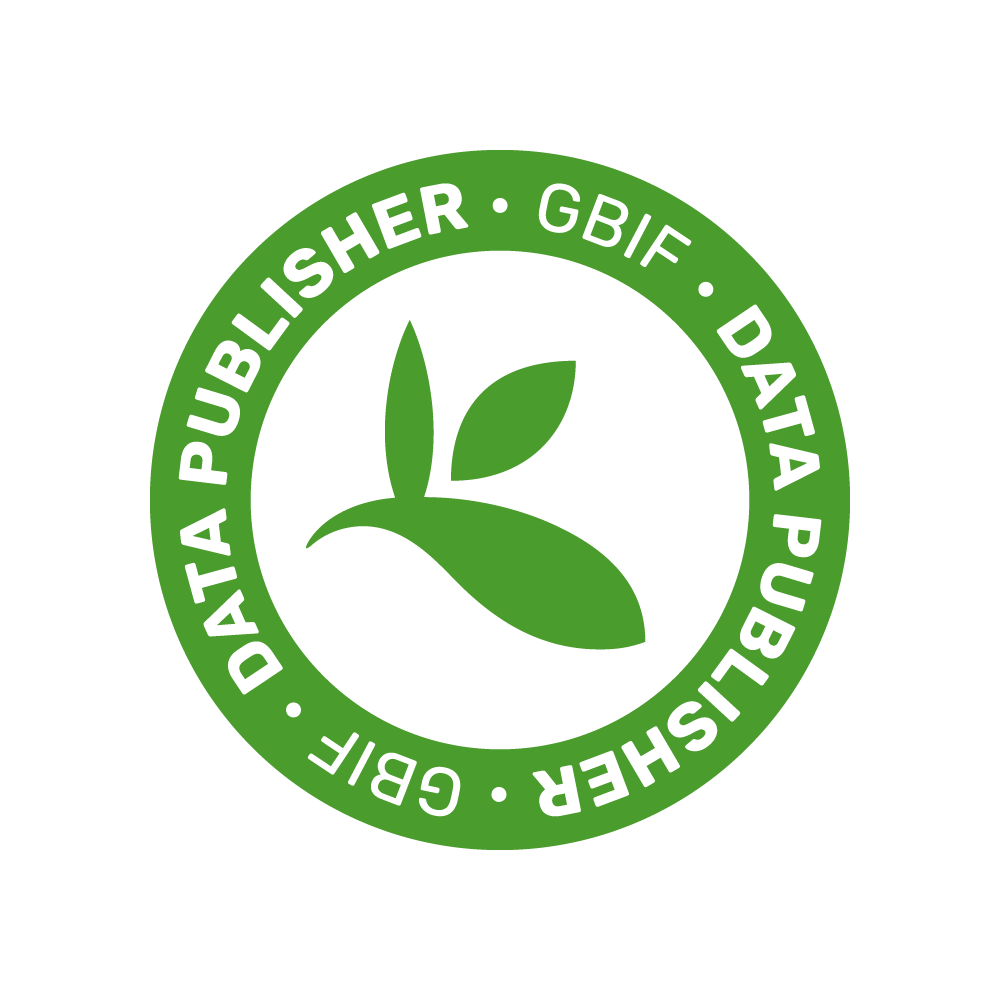Silvia Gigliotti
Role: Researcher
Section: Researchers and Technologists
Division: Naples
Tel: (39) 081-6132260
E-mail: silvia.gigliotti[at]cnr.it
URL: http://ibbr.cnr.it

Education
1987: Degree in Biological Sciences "summa cum laude" at the University of Naples "Federico II", Italy. Title of the experimental thesis: “Isolation, characterization and expression of a gene coding for a vitelline membrane protein in Drosophila melanogaster”, winner of the 1988 Outstanding Dissertation Award conferred by the Italian Society of Biophysics and Molecular Biology.
Research positions and Academic appointments
2014-present: Researcher at the Institute of Biosciences and Bioresources, CNR, Naples, Italy.
2005-present: Member of the Scientific Board of the European PhD program in “Insect Science and Biotechnology”.
2009-2013: Lecturer of the Course “Laboratory of Insect Biotechnology” at the Biotechnology Faculty of the University of Naples “Federico II”, Italy.
1998-2013: Researcher at the Institute of Genetics and Biophysics “A. Buzzati-Traverso”, CNR, Naples, Italy.
1995-1998: Researcher Art. 23 (temporary position) at the Institute of Genetics and Biophysics, CNR, Naples, Italy.
1994-1995: Research fellow at the III Zoological Institute, Developmental Biology Department, Georg-August University, Goettingen, Germany. Recipient of an EC Fellowship, 3rd EC Framework “Human Capital and Mobility”. Supervisor: Prof. M. Schaefer. Transcriptional and translational control in Drosophila melanogaster spermatogenesis.
1988-1993: Research fellow at the Institute of Genetics and Biophysics, CNR, Naples, Italy. Recipient of a Fellowship of the United States Department of Agriculture, ARS/ENT, Biological control of Weeds Laboratory, US Embassy, Rome, Italy and a MISM-CNR Fellowship. Supervisors: Drs. F. Graziani and C. Malva. Genetic and molecular characterization of Drosophila melanogaster genes involved in oogenesis and early embryonic development.
1985-1987: Graduate student at the Institute of Genetics and Biophysics, CNR, Naples, Italy. Supervisor: Dr. F. Graziani. Molecular genetics of oogenesis in Drosophila melanogaster.
Research Interests
I use Drosophila melanogaster as model system to address basic questions in cell and developmental biology, as well as experimental organism to investigate the molecular bases of host-parasite interactions in insects, with special emphasis on parasitoid wasps. These are extremely important biocontrol agents, targeting different species of pest insects responsible for extensive crop damages. The research projects undergoing in my lab are aimed at obtaining functional information on the biological processes affected by parasitoid wasps in their hosts and identifying parasitoid wasp-derived molecules potentially useful as bioinsecticides. Main focus of our studies is insect immunity. By using a combination of genetic, molecular and microscopy approaches we are gathering novel information on the mechanisms underlying the insect immune response and the immunosuppressive action of parasitoid wasps. Based on these findings, specific biotechnological strategies and tools can be developed to cripple the immune system of pest insects, thus enhancing the impact of their natural antagonists.
Publications
Peer reviewed articles:
Di Lelio I, Varricchio P, Di Prisco G, Marinelli A, Lasco V, Caccia S, Casartelli M, Giordana B, Rao R, Gigliotti S (co-corresponding author), Pennacchio F. (2014). Functional analysis of an immune gene of Spodoptera littoralis by RNAi. J Insect Physiol. 64:90-7.
Falabella P, Riviello L, Pascale M, Di Lelio I, Tettamanti G, Grimaldi A, Iannone C, Monti M, Pucci P, Tamburro AM, deEguileor M, Gigliotti S (co-corresponding author), Pennacchio F. (2012). Functional amyloids in insect immune response. Insect Biochem Mol Biol 42: 203-211.
Ottone C, Gigliotti S, Giangrande A, Graziani F, Verrotti di Pianella A. (2012). The translational repressor Cup is required for germ cell development in Drosophila. J Cell Sci. 125: 3114-3123.
Ottone C, Galasso A, Gemei M, Pisa V, Gigliotti S, Piccioni F, Graziani F, Verrotti di Pianella A. (2011). Dimunution of eIF4E activity suppresses parkin mutant phenotypes. Gene 470:12-19.
Duchi S, Cavaliere V, Fagnocchi L, Grimaldi MR, Falabella P, Graziani F, Gigliotti S, Pennacchio F, Gargiulo G. (2010). The impact on microtubule network of a bracovirus IkappaB-like protein. Cell Mol Life Sci 67:1699-1712.
Vaccaro MC, Gigliotti S, Graziani F, Carotenuto R, De Angelis C, Tussellino M, Campanella C. (2010). A transient asymmetric distribution of XNOA 36 mRNA and the associated spectrin network bisects Xenopus laevis stage I oocytes along the future A/V axis. Eur J Cell Biol 89:525-536.
Falabella P, Riviello L, De Stradis ML, Stigliano C, Varricchio P, Grimaldi A, de Eguileor M, Graziani F, Gigliotti S, Pennacchio F. (2009). Aphidius ervi teratocytes release an extracellular enolase. Insect Biochem Mol Biol 39: 801-813.
Pisa V, Cozzolino M, Gargiulo S, Ottone C, Piccioni F, Monti M, Gigliotti S, Talamo F, Graziani F, Pucci P, Verrotti AC. (2009). The molecular chaperone Hsp90 is a component of the cap-binding complex and interacts with the translational repressor Cup during Drosophila oogenesis. Gene 432:67-74.
Piccioni F, Ottone C, Brescia P, Pisa V, Siciliano G, Galasso A, Gigliotti S, Graziani F, Verrotti AC. (2009). The translational repressor Cup associates with the adaptor protein Miranda and the mRNA carrier Staufen at multiple time-points during Drosophila oogenesis. Gene 428:47-52.
Grimaldi MR, Cozzolino L, Malva C, Graziani F, Gigliotti S. (2007). nup154 genetically interacts with cup and plays a cell-type-specific function during Drosophila melanogaster egg-chamber development. Genetics 175:1751-1759.
Riparbelli MG, Gigliotti S, Callaini G. (2007). The Drosophila nucleoporin gene nup154 is required for correct microfilament dynamics and cell death during oogenesis. Cell Motil Cytoskeleton 64:590-604.
Galasso A, Pane LS, Russo M, Grimaldi MR, Verrotti AC, Gigliotti S, Graziani F. (2007). dSTAM expression pattern during wild type and mutant egg chamber development in D. melanogaster. Gene Expr Patterns 7:730-737.
Falabella P, Riviello L, Caccialupi P, Rossodivita T, Valente MT, De Stradis ML, Tranfaglia A, Varricchio P, Gigliotti S, Graziani F, Malva C, Pennacchio F. (2007). A gamma-glutamyl transpeptidase of Aphidius ervi venom induces apoptosis in the ovaries of host aphids. Insect Biochem. Mol. Biol. 37: 453-465.
Pisa V, Gigliotti S, Graziani F, Verrotti AC. (2007). Molecular mechanisms of metazoan oocyte development. Funct. Dev. Embryol. 1:136-146.
Gigliotti S, Cavaliere V, Gargiulo G, Graziani F, Malva C. (2004). Molecular genetics of oogenesis in Drosophila melanogaster. Invertebrate Survival Journal 1: 72-81.
Gigliotti S, Rotoli D, Graziani F, Malva C. (2003). Oogenesis in D. melanogaster: a model system for studying cell differentiation and development. Italian J. Biochem. 52: 104-111.
Falabella P, Varricchio P, Gigliotti S, Tranfaglia A, Pennacchio F, Malva C. (2003). Toxoneuron (=Cardiochiles) nigriceps polydnavirus encodes a putative aspartyl protease and is highly expressed in parasitised host larvae. Insect Molecular Biology 12: 9-17.
Gigliotti S, Rotoli D, Manzi A, Graziani F, Malva C. (2000). Female sterile mutations and egg chamber development in Drosophila melanogaster. Int. J. Dev. Biol. 44: 581-589.
Kiger AA, Gigliotti S, Fuller MT (1999). Developmental genetics of the essential Drosophila nucleoporin nup154: allelic differences due to an outward-directed promoter in the P-element 3’ end. Genetics 153: 799-812.
Gigliotti S, Callaini G, Andone S, Riparbelli MG, Pernas-Alonso R, Hoffmann G, Graziani F, Malva C. (1998). Nup154, a new Drosophila gene essential for male and female gametogenesis, is related to the Nup155 vertebrate nucleoporin gene. J. Cell Biol. 142: 1195-1207.
Gigliotti S, Balz V, Malva C, Schaefer M. (1997). Organization of regulatory elements in two closely spaced Drosophila genes with common expression characteristic. Mech. Dev. 68: 101-113.
Gigliotti S, Cavaliere V, Manzi A, Tino A, Graziani F, Malva C. (1993). A membrane Guanylate cyclase Drosophila homolog gene exhibit maternal and zygotic expression. Dev. Biol. 159: 450-461.
Gargiulo G, Gigliotti S, Malva C, Graziani F. (1991). Cellular specificity of expression and regulation of Drosophila Vitelline Membrane Protein 32E gene in the follicular epithelium: identification of cis-acting elements. Mech. Dev. 35: 193-203.
Lavorgna G, Malva C, Manzi A, Gigliotti S, Graziani F. (1989). The abnormal oocyte phenotype is correlated with the presence of the blood transposon in D. melanogaster. Genetics 123: 485-494.
Di Franco C, Pisano C, Dimitri P, Gigliotti S, Junakovic N. (1989). Genomic distribution of copia-like transposable elements in somatic tissues and during development of Drosophila melanogaster. Chromosoma 98: 402-410.
Gigliotti S, Graziani F, De Ponti L, Rafti F, Manzi A, Lavorgna G, Gargiulo G, Malva C. (1989). Sex, tissue and stage specific expression of a vitelline membrane protein gene from region 32 of the second chromosome of D. melanogaster. Dev. Genet. 10: 33-41.
Book Chapters:
S. Gigliotti, C. Malva (2014). Struttura ed evoluzione del genoma. In: “Gli insetti e il loro controllo”, Liguori Editore, pag. 249-273.
S. Gigliotti, C. Malva, M Salvemini, G. Saccone, C. Polito (2014). La trasformazione genetica degli insetti. In: “Gli insetti e il loro controllo”, Liguori Editore, pag. 675-690.
Malva C, Gigliotti S, Cavaliere V, Manzi A, Graziani F. (1993). Characterisation and expression of a membrane guanylate cyclase Drosophila gene. In "Insect Neurochemistry and Neurophisiology", A. B. Borkovec and M. J. Loeb Editors, Prague, CRC Press, Inc.: 363-365.
Gigliotti S, Gargiulo G, Manzi A, Graziani F, Malva C. (1993). D. melanogaster as a model system for fruit flies of economic importance: the Vitelline Membrane Protein 32E gene regulatory sequences. In "Fruit Flies, Biology and Management", M. Aluja and P. Liedo Editors, Springer-Verlag New York, Inc.: 71-76.
Selected Publications
(full list available at CNR People)
A salivary chitinase of Varroa destructor influences host immunity and mite’s survival
Becchimanzi A, Tatè R, Campbell EM, Gigliotti S, Bowman AS, Pennacchio F
Year: 2020
Midgut microbiota and host immunocompetence underlie Bacillus thuringiensis killing mechanism
Caccia S, Di Lelio I, La Storia A, Marinelli A, Varricchio P, Franzetti E, Banyuls N, Tettamanti G, Casartelli M, Giordana B, Ferré J, Gigliotti S, Ercolini D, Pennacchio F
Year: 2016
Functional analysis of an immune gene of Spodoptera littoralis by RNAi
Di Lelio Ilaria, Varricchio Paola, Di Prisco Gennaro, Marinelli Adriana, Lasco Valentina, Caccia Silvia, Casartelli Morena, Giordana Barbara, Rao Rosa, Gigliotti Silvia, Pennacchio Francesco
Year: 2014
Struttura ed evoluzione del genoma
Gigliotti S, Malva C
Year: 2014
La trasformazione genetica degli insetti
Gigliotti S, Malva C, Salvemini M, Saccone G, Polito C
Year: 2014




